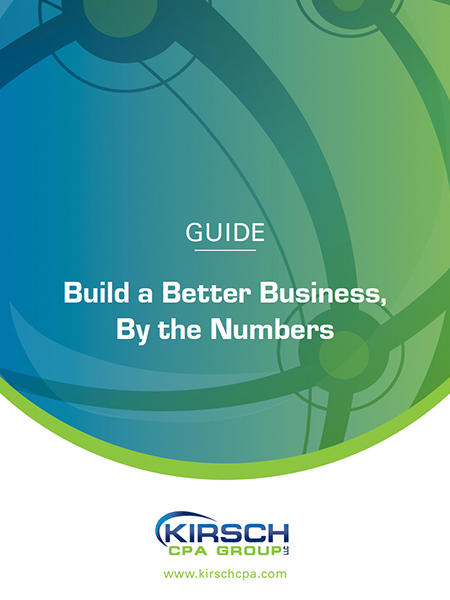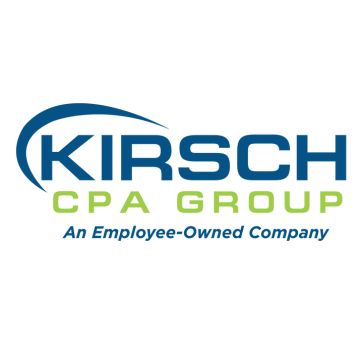5 Ideas to Help Small Business Owners Reduce Taxes for 2023
Nov 21, 2023

As year end approaches, small business owners should review their tax situations to determine ways to lower federal income taxes for the current tax year — and beyond. Fortunately, no significant unfavorable federal tax law changes that would affect 2023 or 2024 are expected. So, there’s more certainty regarding the tax rules today than this time last year. Here are five ideas to help reduce business taxes for your 2023 tax year.
1. Manage the Timing of Business Income and Deductions
If you conduct your business as a pass-through entity — meaning a sole proprietorship, S corporation, partnership, or limited liability company (LLC) taxed as a sole proprietorship or partnership — your share(s) of the tax items from the business are passed through to you and reported on your personal return.
As year end draws near, evaluate whether you’ll be in the same or a lower federal income tax bracket in 2024. (See “2023 Tax Rates and Brackets for Individuals,” below.) If you think that will be the case, the traditional year-end strategy of deferring taxable income into next year while accelerating deductible expenditures into this year makes sense. Deferring income and accelerating deductions will, at a minimum, postpone part of your tax bill from 2023 until 2024.
On the other hand, if you expect to be in a higher tax bracket in 2024, take the opposite approach. If possible, accelerate income into this year and postpone deductible expenditures until 2024. That way, more income will be taxed at this year’s lower rate instead of next year’s higher rate.
2. Make Last-Minute Asset Additions
Under current tax law, qualified new and used property that’s acquired and placed in service in calendar year 2023 is eligible for 80% first-year bonus depreciation (down from 100% in 2022). The first-year bonus depreciation percentages for most eligible assets are scheduled to be further reduced as follows:
- 60% for assets placed in service in calendar year 2024,
- 40% for 2025, and
- 20% for 2026.
For certain property with longer production periods, these reductions are delayed by one year.
Thankfully, the first-year Section 179 depreciation deduction will allow many small and medium-sized businesses to write off the entire cost of some or all of their 2023 asset additions on this year’s federal income tax return (and possibly on their state income tax returns).
However, there are several limitations on the deduction. For tax years beginning in 2023, the maximum Sec. 179 deduction is $1.16 million and a phaseout rule kicks in if you put more than $2.89 million of qualifying assets into service in the year.
In addition, the Sec. 179 deduction can’t cause your business to have negative taxable income. If the Sec. 179 limitations curtail your deduction, you may be able to claim 80% first-year bonus depreciation for assets that can’t be written off in the first year with the Sec. 179 deduction. Contact your tax advisor to determine what’s right for your situation.
However, if you expect significant tax-rate increases in future years, you could be better off forgoing first-year bonus depreciation and Sec. 179 write-offs and instead depreciating newly acquired assets over a number of years. If tax rates go up, those future depreciation write-offs could be worth more than a current-year write-off.
Fortunately, you have until the deadline for filing your current-year federal income tax return, including any extension, to decide whether to write off purchases immediately or depreciate them over time. If your business uses the calendar year for tax purposes, the extended filing deadline is October 15, 2024, for 2023 returns for sole proprietorships and C corporations. The extended deadline is September 16, 2024, for partnerships, LLCs taxed as partnerships and S corporations. Extending your return may give you more flexibility to react to future tax developments.
3. Write Off Heavy SUV, Pickup or Van Purchases
The current federal income tax rules for depreciating new and used heavy vehicles used over 50% for business are highly favorable. That’s because heavy SUVs, pickups and vans are treated for federal income tax purposes as transportation equipment. That means the business-use percentage of the cost qualifies for 80% bonus depreciation if placed in service in calendar year 2023 and/or you take a first-year Sec. 179 deduction on the current year’s federal income tax return.
These generous tax breaks are available when the SUV, pickup or van has a manufacturer’s gross vehicle weight rating (GVWR) above 6,000 pounds. You can verify this by looking at the manufacturer’s label that’s usually found on the inside edge of the driver’s side door where the door hinges meet the frame. If you’re considering buying an eligible vehicle, placing it in service before year end could deliver a sizable write-off on this year’s return.
However, see the preceding caveat about possible tax rate increases in future years. You have until the deadline for filing your current-year federal income tax return, including any extension, to decide how to depreciate a newly acquired heavy vehicle used in your business.
4. Maximize Your QBI Deduction
The deduction based on an individual’s qualified business income (QBI) from pass-through entities was a key element of the Tax Cuts and Jobs Act (TCJA). The deduction can be up to 20% of a pass-through entity owner’s QBI, subject to restrictions that can apply at higher income levels and another restriction based on the owner’s taxable income.
For QBI deduction purposes, pass-through entities include:
- Sole proprietorships,
- Single-member LLCs that are treated as sole proprietorships for tax purposes,
- Partnerships,
- LLCs that are treated as partnerships for tax purposes, and
- S corporations.
You can also claim the QBI deduction for up to 20% of qualified REIT dividends and up to 20% of qualified income from publicly traded partnerships.
Because of the income limitations on the QBI deduction, year-end tax planning moves can increase or decrease your allowable QBI deduction. For instance, year-end moves that reduce this year’s taxable income — such as claiming first-year depreciation deductions or making deductible retirement plan contributions — can reduce this year’s allowable QBI deduction. Work with your tax advisor to optimize your overall tax results.
5. Establish a Tax-Favored Retirement Plan
If your business doesn’t already have a retirement plan, now might be the time to take the plunge. Current retirement plan rules allow for significant annual deductible contributions.
For example, if you’re self-employed and set up a SEP-IRA, you can contribute up to 20% of your self-employment earnings, with a maximum contribution of $66,000 for the 2023 tax year. If you’re employed by your own corporation, up to 25% of your salary can be contributed to your account, with a maximum contribution of $66,000. If you’re in the 32% federal income tax bracket, making a maximum contribution could cut what you owe Uncle Sam for 2023 by a whopping $21,120 (32% times $66,000).
Other small business retirement plan options include:
- 401(k) plans, which can even be set up for just one person (called solo 401(k)s),
- Defined benefit pension plans, and
- SIMPLE-IRAs.
Depending on your circumstances, these other types of plans may allow bigger deductible contributions.
Thanks to a change made by the SECURE Act of 2019, tax-favored qualified employee retirement plans, except for SIMPLE-IRA plans, can now be adopted by the due date (including any extension) of the employer’s federal income tax return for the adoption year. The plan can then receive deductible employer contributions that are made by the due date (including any extension), and the employer can deduct those contributions on the return for the adoption year.
Important: The SECURE Act doesn’t change the deadline to establish a SIMPLE-IRA plan. It remains October 1 of the year for which the plan is to take effect. Also, the SECURE Act change doesn’t override rules that require certain plan provisions to be in effect during the plan year, such as the provisions that cover employee elective deferral contributions (salary-reduction contributions) under a 401(k) plan. The plan must be in existence before employee elective deferral contributions can be made.
For example, the deadline for setting up a SEP-IRA for a sole proprietorship business that uses the calendar year for tax purposes and making the initial deductible contribution for the 2023 tax year was October 15, 2023, if you extended your 2023 personal tax return. However, to make a SIMPLE-IRA contribution for the 2023 tax year, you must have set up the plan by October 1.
While you have until next year to establish a tax-favored retirement plan, why wait? Get it done this year as part of your year-end tax planning. Contact Kirsch CPA Group for more information on alternatives and be aware that if your business has employees, you may have to make contributions for them, too.
Time Is Running Out
The year-end tax planning picture is much clearer this year than last year. Unless something unexpected happens, these five ideas will work for many small businesses. But there could be additional tax-smart year-end moves that apply to your situation. So, contact Kirsch CPA Group to discuss possible tax planning strategies to implement before you ring in the New Year.
2023 Tax Rates and Brackets for Individuals
C corporations, including personal service corporations, pay a flat 21% federal income tax rate under current tax law. Then corporate income is taxed again when it’s distributed to shareholders.
However, income from pass-through businesses — including sole proprietorships, S corporations, partnerships, and limited liability companies taxed as sole proprietorships or partnerships — isn’t taxed at the entity level. Instead, it’s reported on the owners’ personal tax returns for the year and taxed as ordinary income. Here’s a summary of the federal tax rates on ordinary income for 2023.
2023 Federal Tax Rates on Ordinary Income
| Tax Rates | Single | Married Joint Filers | Head of Household |
| 10% | $0 – $11,000 | $0 – $22,000 | $0 – $15,700 |
| 12% | $11,001 – $44,725 | $22,001 – $89,450 | $15,701 – $59,850 |
| 22% | $44,726 – $95,375 | $89,451 – $190,750 | $59,851 – $95,350 |
| 24% | $95,376 – $182,100 | $190,751 – $364,200 | $95,351 – $182,100 |
| 32% | $182,101 – $231,250 | $364,201 – $462,500 | $182,101 – $231,250 |
| 35% | $231,251 – $578,125 | $462,501 – $693,750 | $231,251 – $578,100 |
| 37% | $578,126 and up | $693,751 and up | $578,101 and up |
Due to inflation adjustments, the thresholds for the 2024 federal income tax brackets for individual taxpayers will be about 5.4% higher than the 2023 thresholds. That means that, other things being equal and assuming that the current federal income tax rules remain in place through next year, you can have about 5.4% more taxable income next year without being pushed into higher tax brackets.
We can help you tackle business challenges like these – schedule an appointment today.
© Copyright 2023. All rights reserved.
Sign Up for Email Updates
Accounting & Financial News

3 Critical Questions to Ask When Acquiring Construction Equipment
Acquiring equipment is a major strategic decision for small to midsize construction businesses. It affects everything from…

Traveling for Business with Your Spouse
If you're a business owner, you may have upcoming business trips on your agenda. The idea of…




